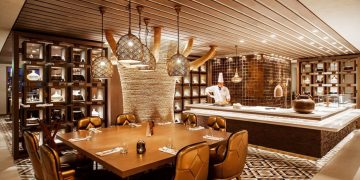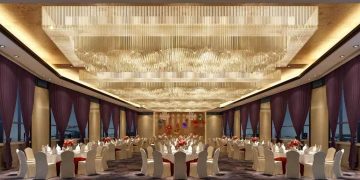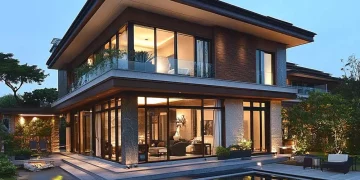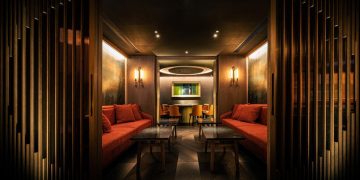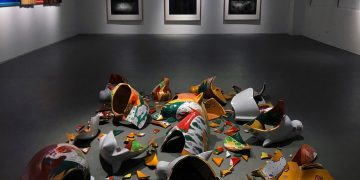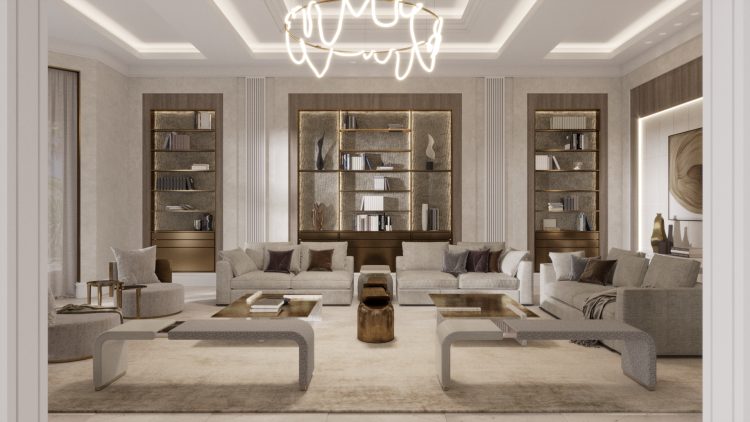When it comes to interior design, luxury is no longer just about grandeur—it’s an intricate, layered process of curation, craftsmanship, and innovation. The world’s most expensive interior designs are not merely about extravagant materials or over-the-top ornamentation. They are a masterclass in creating spaces that embody both elegance and functionality while pushing the boundaries of design possibilities. These interiors reflect the tastes, dreams, and desires of the world’s wealthiest individuals, often blending centuries-old traditions with cutting-edge technologies.
In this article, we’ll take you on a journey through the creation of some of the most luxurious and expensive interiors ever conceived. We’ll explore how renowned designers and architects combine space planning, luxury materials, personalized touches, and the finest luxury accoutrements to craft spaces that stand as lasting symbols of opulence. From initial concepts to the final reveal, this article will delve into the critical steps involved in creating a high-end interior that’s as functional as it is extraordinary.
The Concept: The Foundation of a Dream Space
The creation of any luxury interior begins with a vision—an idea that transcends mere aesthetics to create a living space that speaks to the identity and lifestyle of the homeowner. For many ultra-wealthy individuals, interior design is an opportunity to translate their personal brand into a tangible environment, one that feels uniquely their own. This might involve a balance of classical elegance and modern sophistication or may focus heavily on themes like art or nature, depending on the client’s interests and personality.
1. Understanding the Client’s Vision
The first step in any design process is to truly understand the client’s desires. In the world of luxury interior design, this involves hours, sometimes days, of conversations with the client. Design firms often employ personalized consultations to extract the deepest desires of their clients—everything from the aesthetic they gravitate towards to the specific functionality they require in their home.
Some clients desire minimalism with carefully curated pieces, while others prefer an eclectic and richly textured environment filled with exquisite furniture and luxury accessories. The interior designer must tap into their clients’ psychological needs—their emotions, their heritage, and their cultural or social status—and channel those into a coherent design concept.
2. Blending Traditional Design with Modern Technologies
In creating spaces that boast of unparalleled luxury, designers often bring together traditional craftsmanship and cutting-edge technology. This might involve collaborating with artisan manufacturers who create handcrafted furniture, custom fabrics, and bespoke fixtures. It could also include the integration of smart home technologies—from climate control systems to advanced lighting and entertainment—all designed to seamlessly complement the opulent surroundings.
3. The Role of Space Planning
Before luxury materials or furniture are even considered, interior designers must meticulously plan how the space will function. In the most expensive interior designs, space planning goes far beyond arranging furniture; it involves creating flow, ensuring privacy, and integrating luxurious features such as home theaters, private gyms, and indoor gardens.
For example, in a luxury penthouse, the master suite may need to have sweeping views of the city’s skyline, while also being shielded from the social spaces to ensure quiet and privacy. The art may be placed in a way that draws the eye while maintaining balance and symmetry, and in a modern mansion, the layout will encourage an easy transition from indoor to outdoor living spaces.
Materials and Furnishings: Crafting a World of Opulence
The materials chosen for these designs are some of the rarest and most expensive in the world. When combined with luxury accoutrements, they can elevate a room from simply being stylish to truly remarkable. Let’s take a closer look at some of the materials and finishes often chosen for premium interiors.
1. Exotic Woods
One of the most common materials found in the world’s most luxurious interiors is exotic wood. Varieties such as macassar ebony, rosewood, and zebrano are often used for cabinetry, paneling, and even flooring. These woods are known for their rich, dark hues and distinctive grain patterns that add a touch of sophistication to any room.
Luxury furniture pieces crafted from exotic wood can fetch prices in the hundreds of thousands of dollars due to the rarity and quality of the materials.
2. Precious Metals and Stones
Incorporating precious metals like gold, platinum, and silver into the design is another hallmark of high-end interiors. These metals are used not only in the finishes of furniture and accessories but also in wall treatments, light fixtures, and artworks. Similarly, stones like marble, onyx, and quartzite are often used for countertops, floors, and walls, elevating the visual appeal while adding an air of timelessness and elegance.
White marble, in particular, is a favorite for many designers when creating luxurious spaces, prized for its veined patterns and clean, sophisticated look. Onyx, often used in bathrooms or feature walls, allows for a luminescent glow when backlit.
3. Luxury Fabrics
Luxury fabrics such as silk, velvet, cashmere, and leather are a staple in the world of high-end interior design. These materials are used in everything from upholstery and drapes to cushions and bed linens. Designers will often source exclusive fabrics from the best mills across Europe or the Middle East to ensure their clients’ spaces are draped in the finest materials available.
For instance, high-thread-count linen is often used in bedrooms, while Baccarat crystal chandeliers might be paired with soft, deep-hued velvet curtains to create a luxurious ambiance.
4. Custom Lighting Designs
Lighting plays an essential role in creating the atmosphere in any luxurious interior design. For the wealthy, lighting is not just about function, but about creating an aesthetic atmosphere that reflects their personal taste. Many of the most exclusive designs feature bespoke chandeliers, handcrafted sconces, and integrated lighting systems that can be controlled through smart devices.
Lighting design often involves a mix of both ambient and accent lighting, using crystal, bronze, or brass to create dramatic effects. Some of the most expensive homes feature custom-designed light fixtures, which are hand-assembled and often feature rare materials like Murano glass or Swarovski crystals.
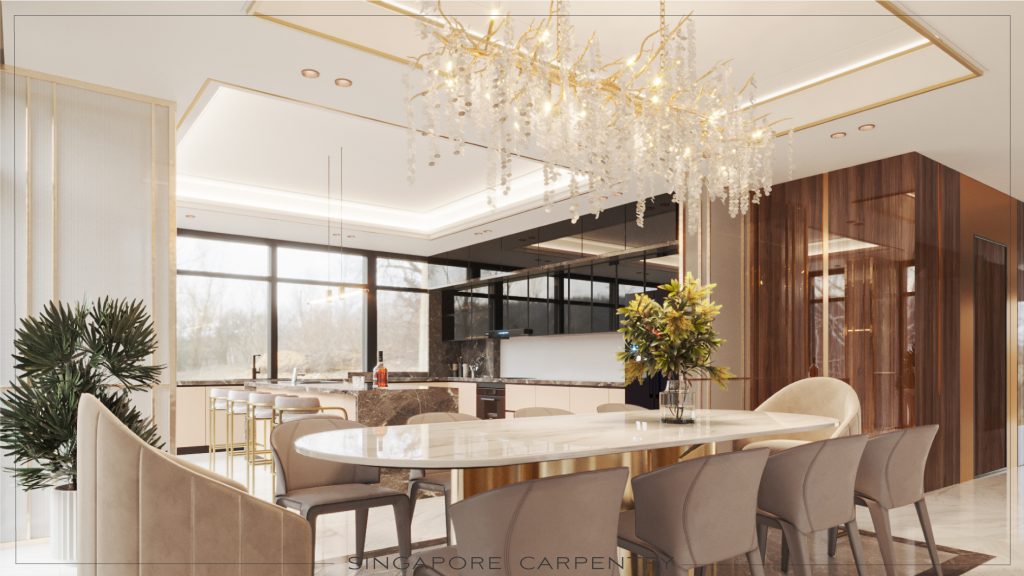
Luxury Accoutrements: The Finishing Touches
In high-end interior design, the devil is in the details. The luxury accoutrements—those final touches that complete the space—are often what elevate a room from beautiful to breathtaking.
1. Artworks and Sculptures
One of the most significant components of a luxury interior is the artwork. Whether it’s paintings from renowned artists like Picasso or Van Gogh, or sculptures created by internationally recognized sculptors, the art pieces within a high-end interior are often unique and irreplaceable. Many of these pieces are custom commissioned for the space, created with specific lighting and layout considerations in mind to ensure they complement the overall aesthetic of the room.
2. Bespoke Furniture
Luxury interiors are often populated by bespoke furniture—pieces created specifically for the space and tailored to fit the client’s exact specifications. This might involve custom-made seating crafted from the finest leathers and exotic woods, or limited-edition furniture from world-renowned designers. Brands like Fendi Casa, Boca do Lobo, and Hermès offer exquisite, highly sought-after furniture pieces that blur the line between art and function.
3. Collector’s Items and Antiques
For those with a penchant for history, collector’s items such as rare antiques, vintage furniture, and special edition artifacts can be woven into the design to create an air of sophistication and tradition. These items not only add depth and character to a space but also act as symbols of wealth and taste, serving as conversation starters and treasures for future generations.
4. High-Tech Gadgets and Audio Systems
No luxury interior is complete without the latest in high-tech gadgets. Integrated audio systems, smart-home technology, and state-of-the-art appliances are a must-have for the ultra-wealthy. These technologies often go unnoticed but enhance the comfort, security, and ease of living within the home. The audio systems, in particular, often come custom-tuned to the acoustics of each room to provide an unparalleled listening experience.
The Creation Process: Bringing It All Together
Creating the world’s most expensive interiors is a collaborative effort that requires input from a variety of design professionals—architects, artisans, craftsmen, furniture designers, and construction teams. The process can take several months or even years, depending on the scale of the project.
Once the concept is finalized, work begins with the installation of the structural elements, followed by the meticulous process of sourcing and installing furniture and accessories. Some designers employ their own in-house teams of artisans to create custom pieces, ensuring that every detail aligns with the vision.
After all the pieces are in place, it’s time for the final touches—the lighting is adjusted, the artworks are hung, the luxury fabrics are draped, and the acoustic systems are tuned.
Conclusion
From the initial concept to the final creation, the world of luxury interior design represents the pinnacle of style, comfort, and innovation. With an emphasis on personalization, craftsmanship, and the finest luxury accoutrements, the process of creating the most expensive interior designs is an art form that blends the old with the new, the traditional with the futuristic. These spaces are not just about high price tags—they are about creating living environments that elevate their owners’ experiences and stand as lasting symbols of their refined tastes and status.









